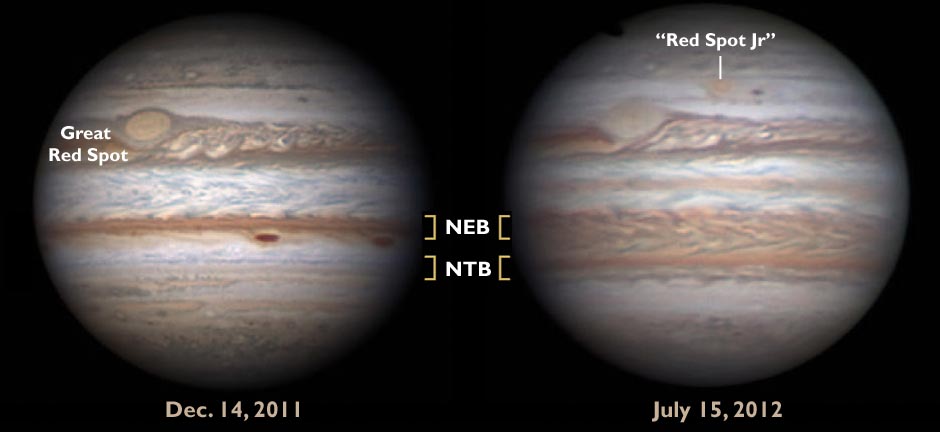The King of Planets has been putting on quite a show lately. Last week two observers spotted a bright fireball in Jupiter's midsection, the sixth such impact to be witnessed since the late 1970s. But even before that fleeting flash, the planet had been roiling with a vigorous outbreak of activity in its North Equatorial Belt.
The NEB is one of two iconic dark bands that bound the planet's brighter Equatorial Zone, an Oreo-cookie arrangement that's visible even in the smallest of backyard telescopes. You might recall that the South Equatorial Belt disappeared in mid-2010, apparently masked by bright, high-altitude clouds. It returned to view by year's end.

But this time the diminution was much more pronounced, until nothing was left but a thin ribbon. Then, just before the planet disappeared into mid-May's conjunction with the Sun, Pennsylvania observer Wayne Jaeschke noted an outbreak of spots in the northern belt's location. By the time Jupiter returned to view in June, a full-blown revival was under way - for the first time since 1926, according to Rogers. And the action wasn't limited to the NEB, as the adjacent North Tropical Belt also seethed with activity.
"Sectors of the belts and the intervening North Tropical Zone, which were still light in June, have now filled in with intense turbulence and reddish (ochre) color," Rogers reports. Visually you'll see one vast brown-and-ochre belt from the NEB's southern edge to the NTB, and a reddish hue is more evident. (Notably, the Great Red Spot remains quite pale.) The NEB's large-scale eruptions have run their course, he says, and familiar types of smaller markings have started to reappear: dark "barges", white ovals, and bright rifts in the belt.
Rogers offers more details about the belt's big breakout in the November issue of Sky & Telescope.
Right now Jupiter rises in the east by 11 p.m., but it won't be well up in the sky (when telescopic views will be better) until after midnight. You might prefer to simply get up before dawn, when you'll find the big planet nearly overhead and tangled in the horns in Taurus. Jupiter reaches opposition on December 3rd, by which time complete order should be restored among its colorful belts and zones.



Reader Comments
to our Newsletter